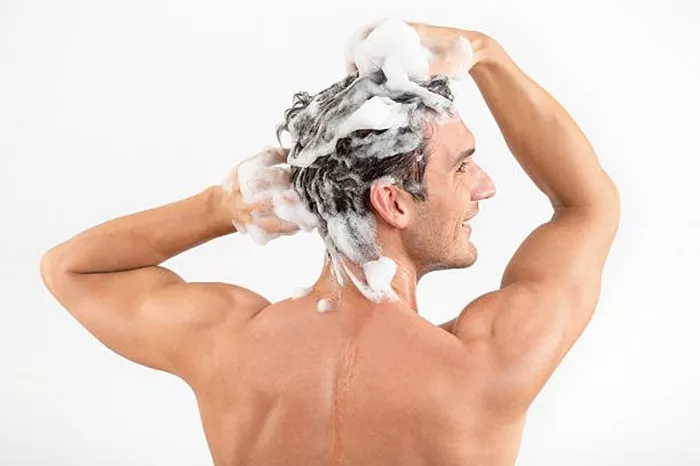Many people worry about whether wet hair can lead to hair loss, especially since hair tends to be more fragile when wet. The idea that washing or handling wet hair could cause excessive shedding is a common concern, but is there any truth to it? To understand this fully, we need to explore the structure of hair, how water affects it, and whether routine activities like combing wet hair contribute to hair loss.
The Structure of Hair and How Water Affects It
Hair is made up of a protein called keratin, which forms the hair shaft. The outermost layer, known as the cuticle, consists of overlapping scales that protect the inner layers. When hair is wet, it absorbs water, causing the shaft to swell. This swelling weakens the hydrogen bonds that give hair its strength and elasticity, making it more vulnerable to damage.
Wet hair can stretch up to 30% of its original length without breaking, but once it exceeds this limit, it can snap. This is why hair is more prone to breakage when wet. However, breakage is not the same as hair loss from the root. True hair loss occurs when hair falls out from the follicle, whereas breakage happens along the shaft.
Does Wet Hair Lead to Permanent Hair Loss?
The simple answer is no—wet hair itself does not cause permanent hair loss. Hair shedding is a natural process, and losing 50 to 100 hairs per day is normal. When hair is wet, it may seem like more hair is falling out because loose hairs that were already in the shedding phase are washed away. This can create the illusion of excessive hair loss.
However, certain habits related to wet hair can contribute to damage and breakage, which may make hair appear thinner over time. For example:
- Aggressive Towel Drying – Rubbing wet hair vigorously with a towel can roughen the cuticle and lead to breakage.
- Brushing or Combing Wet Hair – Wet hair is more elastic and prone to stretching, so harsh brushing can cause strands to snap.
- Using Heat Tools on Damp Hair – Applying heat to hair that isn’t fully dry can cause bubbles to form inside the hair shaft, leading to brittleness and breakage.
While these habits don’t cause hair follicles to stop producing hair, they can weaken the strands, making hair look thinner and less healthy.
Common Myths About Wet Hair and Hair Loss
Several myths surround wet hair and hair loss, leading to unnecessary worry. Let’s debunk some of them:
Myth 1: Washing Hair Frequently Causes Hair Loss
Some people believe that washing hair too often leads to hair loss. In reality, shampooing helps remove dirt, oil, and dead skin cells from the scalp. Unless you’re using harsh products or scrubbing aggressively, washing your hair does not cause hair to fall out. The hairs you see in the shower were already in the shedding phase.
Myth 2: Going Outside with Wet Hair Causes Illness (and Hair Loss)
An old wives’ tale suggests that going outside with wet hair can make you sick, and some even think it causes hair loss. Neither is true. Colds are caused by viruses, not temperature, and wet hair does not affect hair follicles in a way that would lead to hair loss.
Myth 3: Hair Should Never Be Combed When Wet
While it’s true that wet hair is more fragile, gentle detangling with a wide-tooth comb can actually prevent breakage. The key is to avoid pulling or yanking on knots. Starting from the ends and working upward reduces stress on the hair.
Best Practices for Handling Wet Hair
To minimize damage and keep hair healthy, follow these tips:
Use a Microfiber Towel or Cotton T-Shirt
Instead of rubbing hair with a regular towel, gently squeeze out excess water with a soft microfiber towel or an old cotton T-shirt. These materials are gentler on the cuticle and reduce friction.
Apply a Leave-In Conditioner or Detangler
Using a lightweight leave-in conditioner or detangling spray can help smooth the hair and make it easier to comb through without causing breakage.
Avoid Tight Hairstyles When Hair Is Wet
Pulling wet hair into a tight ponytail or braid can stress the roots and lead to traction alopecia over time. If you must tie your hair, opt for a loose bun or braid.
Let Hair Air-Dry When Possible
Excessive heat styling can damage hair, especially when it’s wet. Whenever possible, allow hair to air-dry partially before using a blow dryer on a low-heat setting.
When Should You Be Concerned About Hair Loss?
If you notice excessive hair shedding, it’s important to determine whether it’s normal shedding or a sign of an underlying issue. Conditions like:
- Telogen Effluvium – A temporary form of hair loss caused by stress, illness, or hormonal changes.
- Androgenetic Alopecia – Genetic hair thinning that affects both men and women.
- Scalp Infections – Fungal infections like ringworm can lead to patchy hair loss.
If you’re losing large clumps of hair or noticing bald patches, consult a dermatologist. Most cases of hair loss are unrelated to wet hair and require medical evaluation.
Conclusion
Wet hair itself does not cause hair loss, but improper handling of wet hair can lead to breakage and damage, making hair appear thinner. By adopting gentle hair care practices, you can keep your hair strong and healthy. Remember, normal shedding is part of the hair growth cycle, and seeing a few strands in the shower is usually nothing to worry about. If you have concerns about excessive hair loss, seek professional advice to address any underlying conditions.
Taking care of your hair—whether wet or dry—is about balance. Treat your hair with kindness, avoid harsh treatments, and maintain a healthy scalp to support strong, resilient hair growth.
Related Topics:
- 11 Effective Ways to Stop Side Hair Fall
- Why Does My Hair Fall Out When I Lose Weight?
- Can Hair Thinning Be Reversed? A Full Analysis


